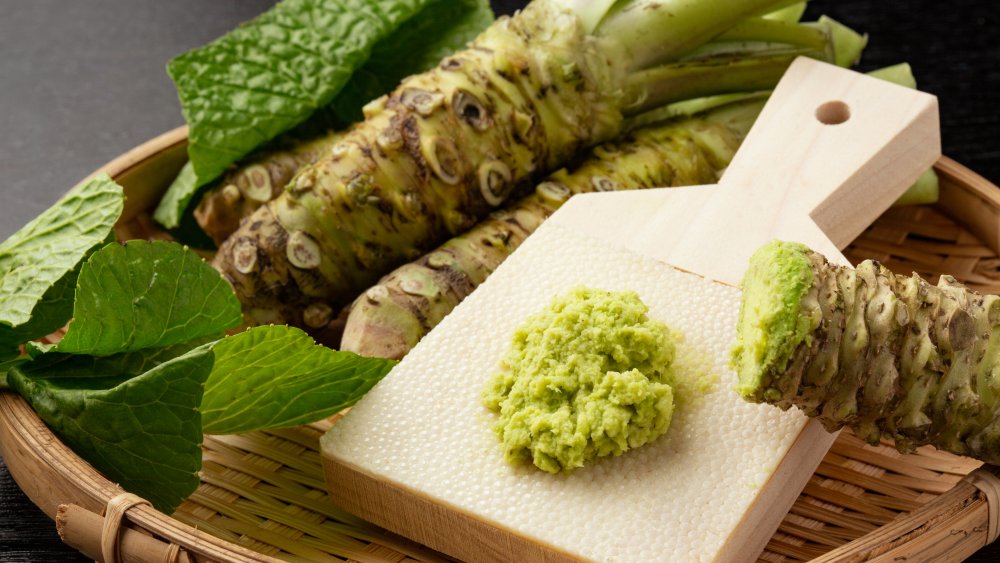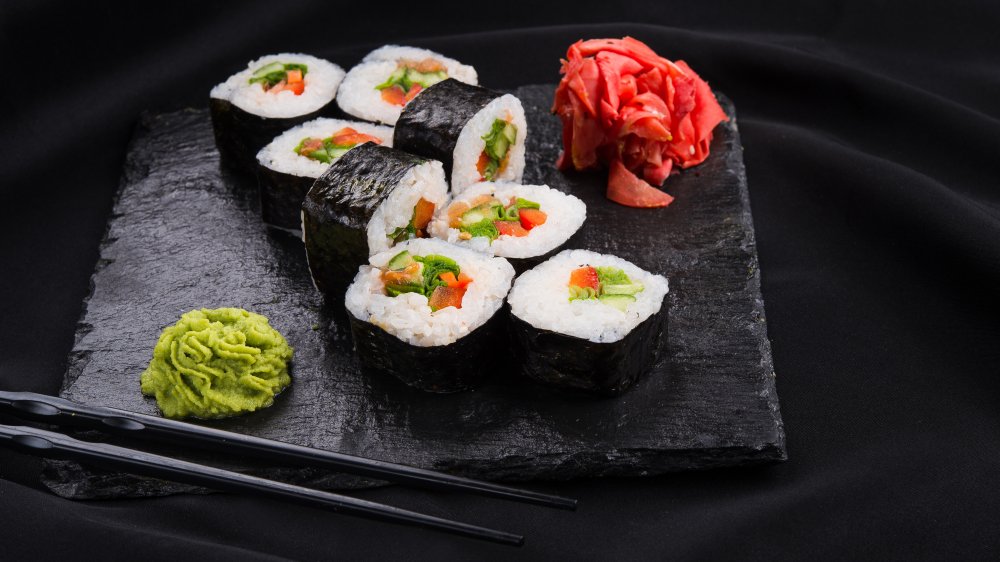The Reason Wasabi Is One Of The Hardest Plants To Grow
New Year's Eve. Did you crack open a bottle of champagne? Odds are, you didn't, because champagne — real champagne, as opposed to, say, sham champagne — only comes from a very specific region in France, produced using very specific and controlled methods, and they will get very testy if you call a bottle of sparkling wine champagne, according to the Comité Champagne. And believe it or not, while there's no watchdog group involved (so far, anyway), the same thing sort of applies to wasabi. That tasty add-on to sushi, the green condiment-like spread with a bite? It's a kind of horseradish, and what you're eating might very well be exactly that: horseradish.
The BBC relates that wasabia japonica is incredibly difficult to grow anywhere but where it's found naturally: in specific areas of Japan. Indiana Public Media goes so far as to call it "the Goldilocks of plants." Some writings referring to wasabi date as far back as 794 BCE, though it's certain that the plant was present around the Edo period — 1600 CE, -ish.
Wasabi packs a bite in every bite
In the wild, says My Water Earth, wasabi grows exclusively on the rocky banks of cold, freshwater rivers. The plants are as finicky as pandas: the water has a temperature range of only about 9 degrees; sun is important, but not too much sun. All of the care, and feeding, and nurturing will produce a crop after about 18 months — that is, if everything really is just right. There are farms in Japan, China, Australia, and even a few in North America that try to produce it commercially. But it ain't easy.
On the other hand, the rewards are nothing to sneeze at. At least one Canadian company gets better than $70/pound, and demand far outstrips supply.
As for that packet of tasty green paste that came in your box of sushi? Probably not actually wasabi — not even in Japan. Huffington Post reports that most commercial wasabi found in restaurants is actually a concoction of horseradish, mustard, and food coloring. Maybe you can wash it down with some sham champagne.

